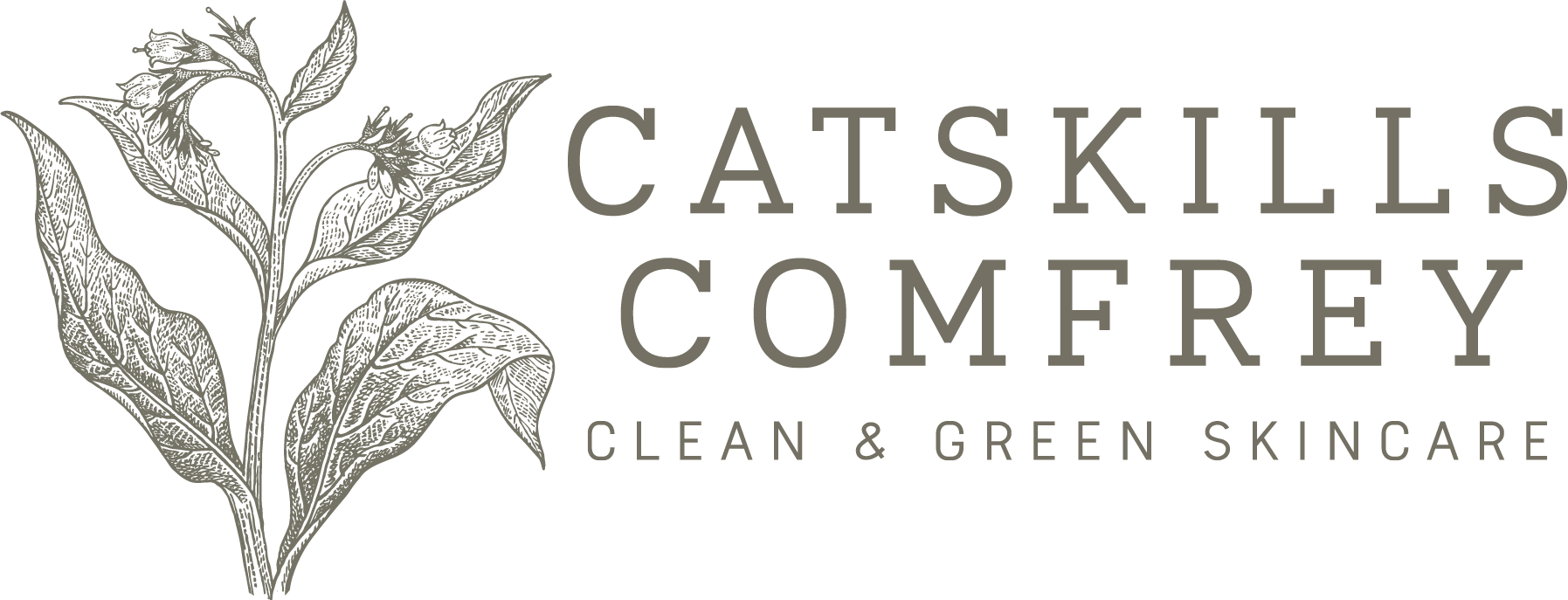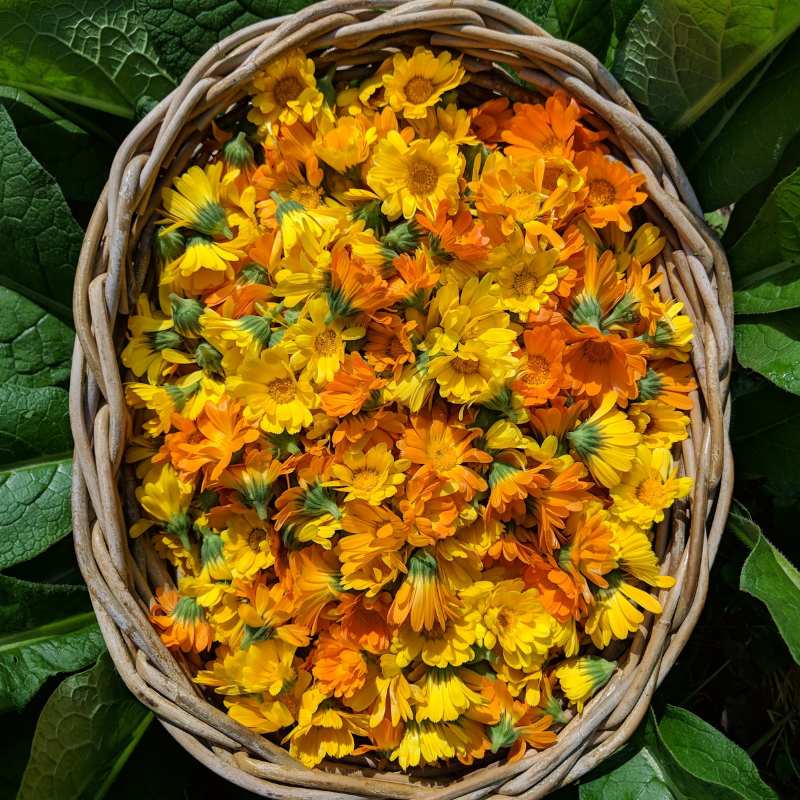The Perfect Colors of Harvest
I began growing calendula this season. It’s a yellow flower, quite prolific it turns out - and is one of the primary ‘supporters’ of comfrey in our new Arnica & Calendula ointment. I had never grown calendula before.
Do I grow it in raised beds? Do I simply throw the seeds or lay them out in ordered rows, with defined spacing? How do I know if they are healthy? And, when this writing arose, how do I know when to harvest the yellow flowers?
I was fortunate. The calendula grew easily and had many buds; a good sign, I had read. My wife was thrilled. She had envisioned the several raised beds at the far end of our ‘formal’ growing area to be easily visible, awash with yellow flowers acting as a broad border, several beds wide.
And that is how it happened. Now, late in the season, I found myself wondering “Are the flowers ready? Are they wide enough? Pick them today? Tomorrow?”. There were no obvious answers and googling was not fully clarifying.
I started picking and found the process rather peaceful. Walking through the several beds, each 12’ x 2’ wide - and full, full, full of brilliantly colored petals of yellow and orange - it became a daily ritual. It became a Zen thing, as I slowly walked and pinched off, into each hand, the top bud with the colorful petals. I had to focus and I looked forward, in high season, to the daily 20 minute ritual of picking the ready petals. There was no other thinking of worldly matters; just the simple pinching of buds as I selected those with that unmistakable, ‘perfect’ orange and yellow bloom of petals.
How beautiful these colors were, these yellows and oranges. As I picked each one and gathered them into a basket, the basket became filled with the most intense hues of perfect orange and yellow. If you had asked me to define the perfect hue of either yellow or orange, I would have said “Come while I harvest calendula and I will show you.”. It was so obvious.
And then it dawned on me. A simple epiphany. You harvest when the fruit, flower or leaf has the truest, healthiest color. Yes, it’s a subjective call. But nature makes it easy - and gives you brilliant colors to choose from when the fruit is ripe. It was easy to confirm this simple finding.
I also grow cherry tomatoes for a small income (very small) and because I love cherry tomatoes. It’s wonderful to see a large cluster of cherry tomatoes, like wine grapes - and thrill in their brilliant colors. The SunGolds give the purest gold when ripe; the Esterinas a soft, rich yellow; the SuperSweet100s a fire-engine red when healthy and ripe; and the Black Cherry, although not truly a ‘black’ tone, provided an unusual, full and deep darkish green to observe when they were ready for harvest. Inside, their meat was an unusual deep purple. Usually it’s the SunGold that grabs all the attention - and it was so again this year. But the unassuming Black Cherry got a surprising amount of rapturous attention this past season.
I sold all of the cherry tomatoes to a local restaurant, Peekamoose - and the staff would often comment on how beautiful the colors were when I brought 30 pints in each week: red, orange, yellow and ‘black’. It was an especially good tomato season this year, but short, maybe 6 or 7 weeks. But during that time, Peekamoose featured my tomatoes on their Appetizer menu. I had my seasonal moment upon the stage or, more aptly put, upon their menu, “Seth’s Cherry Tomatoes”.
But the biggie escaped me. It was the comfrey. And I knew it intuitively. All season I had been remarking to anyone who came over on the deep, pure green that the leaves exhibited. And the larger ones became engorged with this color. It was so obvious when to harvest at the most opportune moment.
In the Catskills, I can get about three harvests from a comfrey plant. The first harvest is the fullest, maybe late April/early May - and the plant is so full, you literally chop the entire plant down several inches above the ground. But as the season grows into a 2nd and 3rd harvest, the focus is simply to select the largest and, I found, the most richly green leaves from each plant. Here again, the perfect color green drew me to the plant and which leaves to harvest.
Nature makes it simple - and provides the clues to a successful harvest. Yes, subjective, but somehow we know the perfect color that is being presented. It’s healthy; it’s pure. Put me in a room with 20 women, one of whom is pregnant - and I will pick out the woman who is with child. It’s the woman who has the peculiar, healthy glow in her skin. It’s subtle but it is there and obvious.
Nature puts this clear signal to best advantage. There’s always this perfect hue, the perfect tone that says ‘Pick me; I’m ready.’. This season’s harvest is completed, dried and stored. But I’ve got filed away, the pleasant expectation of harvesting calendula’s perfect yellows and oranges next year. It’s a perfect daily moment of walking relaxed with ‘no particular place to go’. I have yet to see arnica blooming. But I will next year. I’m certain, too, that arnica will present its own perfect yellow. And I will know exactly when to harvest it without having to google it.

